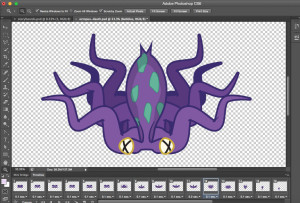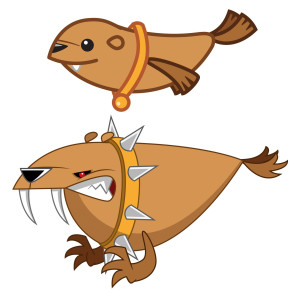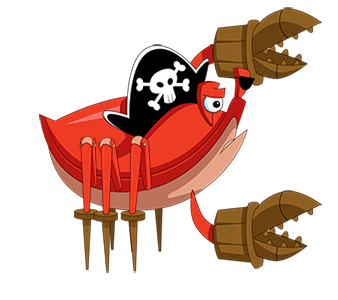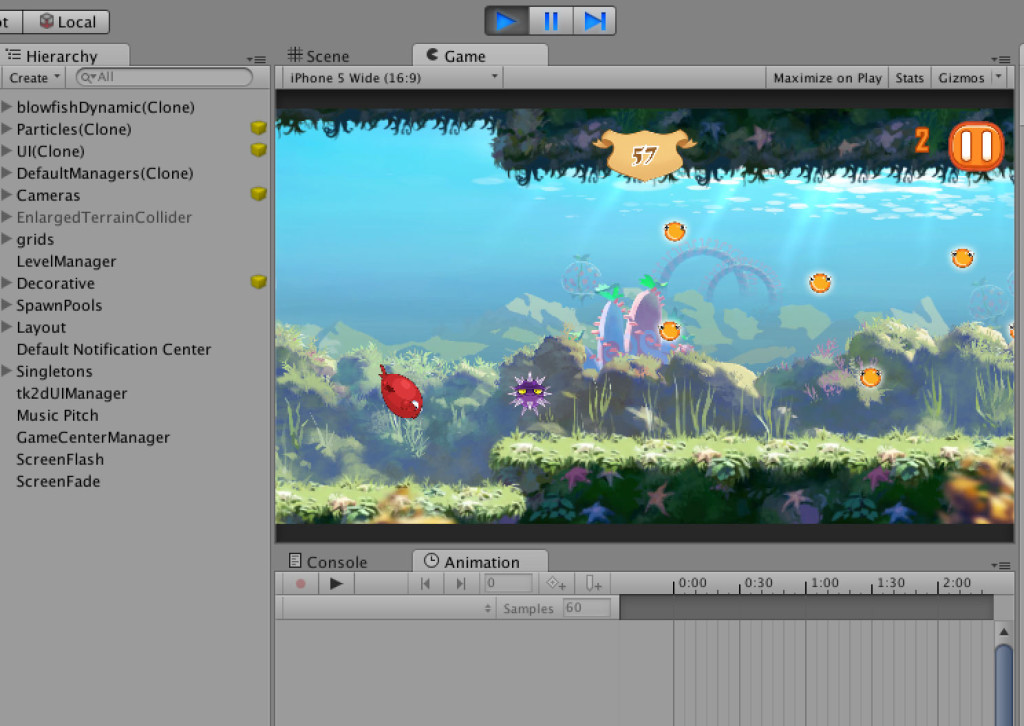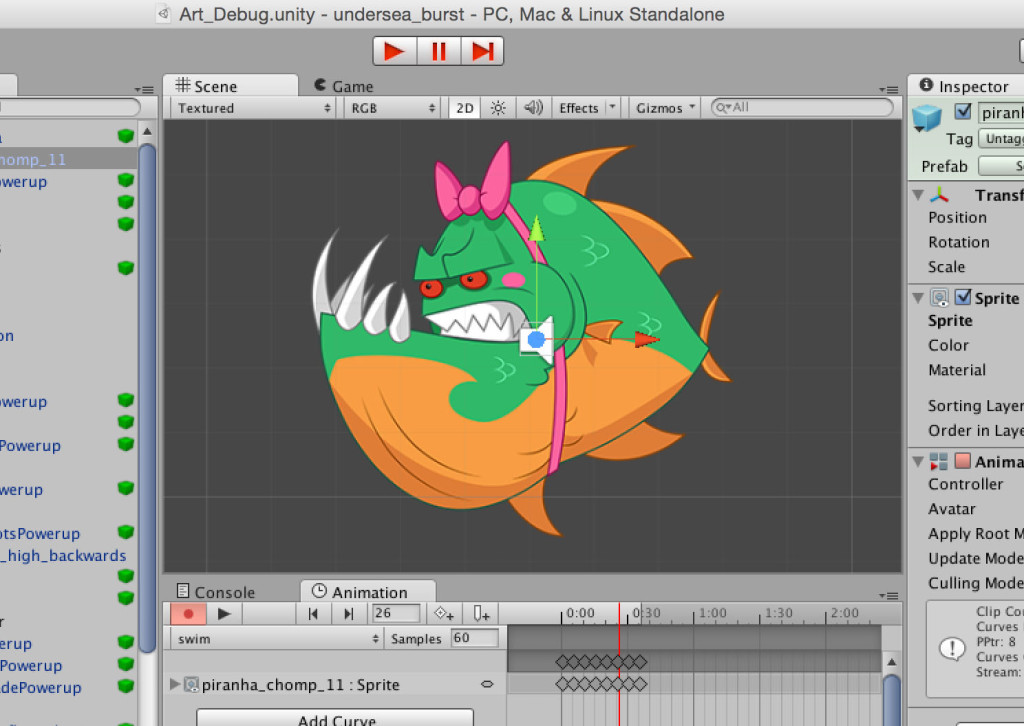Greetings everyone! I’m Ian, one of the artists at Sky Tyrannosaur.
Up to now I feel we’ve been a bit rubbish about updating the world on what we’re up to and I would like that to change moving forward. Not that we can really be blamed for this, mind you, as we’re an extremely small company who’s been quite overambitious when it comes to the scale of our projects, so we can hardly catch a break to step back, breathe in, and be able to talk about what we’ve been frantically slaving over behind closed doors for so long. Making a game is only half the battle, and while I’m confident that we’re very good at that we’re not nearly as good when it comes to actually showing it off.
Seeing as this is my first blog entry about the art for Sky Tyrannosaur it seems fitting to start from the beginning so I can bring everyone up to speed, so here we go!
First, there was a big bang. A few billion years have since passed and now I exist for whatever silly reason. I spent some of this time existing on an internet forum about game design (the RPG Maker series specifically but it eventually stretched beyond that) and that’s how I met Muir. We had worked together in the past on website designs, but one day I got an email from him requesting art for a game he was working on. My interest was immediately piqued.
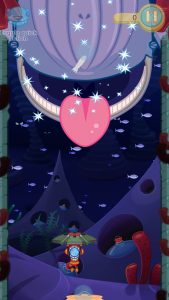 That game was a humble little brick-breaker that snowballed into what is now Blowfish Meets Meteor. And when he asked me to design and animate an evil humpback whale I didn’t at the time realise that we would be embarking on a project that would end up taking us over two years to complete, and that the company Sky Tyrannosaur (or “SkyTy” as we call it either out of paternal affection or laziness) would come into being.
That game was a humble little brick-breaker that snowballed into what is now Blowfish Meets Meteor. And when he asked me to design and animate an evil humpback whale I didn’t at the time realise that we would be embarking on a project that would end up taking us over two years to complete, and that the company Sky Tyrannosaur (or “SkyTy” as we call it either out of paternal affection or laziness) would come into being.
It dawned on us that one of the ways SkyTy could stand out as a game developer was if we really went the extra mile with the art, testing the limits of what an iPhone could handle by cramming in as many graphics and animations as possible without breaking it. We also wanted the art to have a lot of character, charm, and a unique style that would be instantly recognisable as it’d essentially serve as the company’s branding. So what started as a typical paddle and ball block-breaker grew into an immersive world populated with deep sea divers, mermaids, piranhas, penguins, sea lions, pelicans, octopi, even the odd nautilus thrown in.
Having no previous experience making graphics for games, there was a lot of trial and error involved, particularly as I wasn’t always fully aware of the memory limitations of the mobile devices we were designing for. There was also quite a disconnect because I was unable to animate anything directly in game. Muir was working with Cocos2D and the process was that I’d make the sprites, animate them myself in Photoshop, show the animated file to Muir so he can get an idea of how it’s supposed to look, and then he’d have to recreate that through code. The end-product worked out but it was in hindsight a pretty awkward arrangement, especially when I remember how it’d often take weeks (or even months) after having made animations to get an opportunity to see them in the context of the game.
Fast forward to present day, and we’re working with Unity, which is practically a godsend to the game development scene that we regretfully didn’t have at our disposal when we started Blowfish Meets Meteor. There’s been a bit of a learning curve but it’s a far better work process when I’m able to create the animations myself and immediately test them in-game. Who knew that’d help so much?! What has come of this is our spiritual sequel, Blowfish Burst, which is just a massive graphical improvement over our first instalment. This has also been due in part to the fortuitous recruiting of Gene Lange, an incredibly talented background artist who has worked on games like the beautiful Buddy & Me, which in turn freed me up to concentrate more on characters and animations.
When I went to GDC in San Francisco last year to promote Blowfish Meets Meteor, many people asked me about my process and what programs I use. I’ve learnt that my response is quite unorthodox — Photoshop and Illustrator. Other artists at the convention were just itching to talk at length about Toon Boom Harmony and Spine and all their various techniques of using skeletal animation to save on time, but I’ve always found the results to look too puppet-like and almost unnaturally smooth. The appeal of 2D animation has always been in its exaggeratedness, in the emphatic, jerky movements, so when you remove that element you’re left with characters that feel dull and lifeless to me. So I still very much believe in the classic approach of drawing frame-by-frame which has sadly been done away with in a lot of current 2D games, tedious as it might be in comparison, though familiarising myself a lot of with Illustrator in particular has helped me to streamline that process.
The challenge with Illustrator is that it is, of course, not really designed for animating as it comes with no built-in animator tool to test them on the fly, but thanks to some handy Photoshop scripts it’s rather quick and painless to churn out the sprite images and import them into Unity for testing. Then on top of that Unity comes with its own sets of parameters that you can tweak to give the animations more oomph (primarily scale and rotation), which is a relief as in the case of Blowfish Meets Meteor almost all the changes in scale, rotation, transparency, etc. had to be baked into the frames themselves. Being able to construct my animations in Unity has also helped us to create more complex characters that require segmentation (child and parent grouping as is the parlance). For instance this pirate crab needed its body, legs, and each claw to animate separately from each other. That would have been a nightmare working with Cocos2D, so while the bosses in Blowfish Meets Meteor were often enormous, they were structurally less complex out of necessity.
So that basically covers our transition over into Unity and how much we’ve been appreciating it, at least from the artistic side of things. In the next post I’ll discuss Blowfish Burst and the various phases of conceptual metamorphosis it’s gone through to arrive at where we are now, which means I’ll probably be showing a lot of concept art that would have otherwise never been exposed to the world (for better or for worse).
To quote a friend, “It’s not a real job, you just animate exploding TNT barrels all day!” But I must respectfully disagree — I animate a lot of other things exploding, too.
Ciao!
– Ian
(If you want to be kept abreast of our shenanigans be sure to follow us on Facebook and Twitter!)

